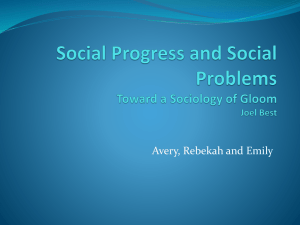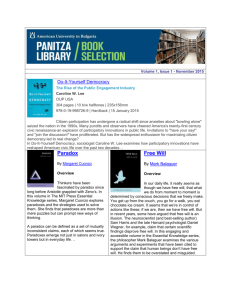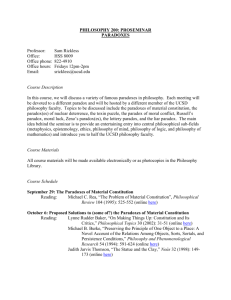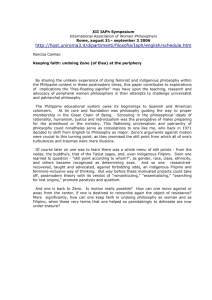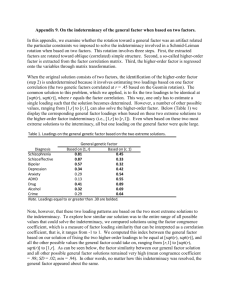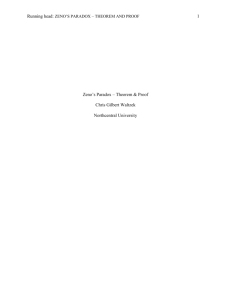- PhilSci
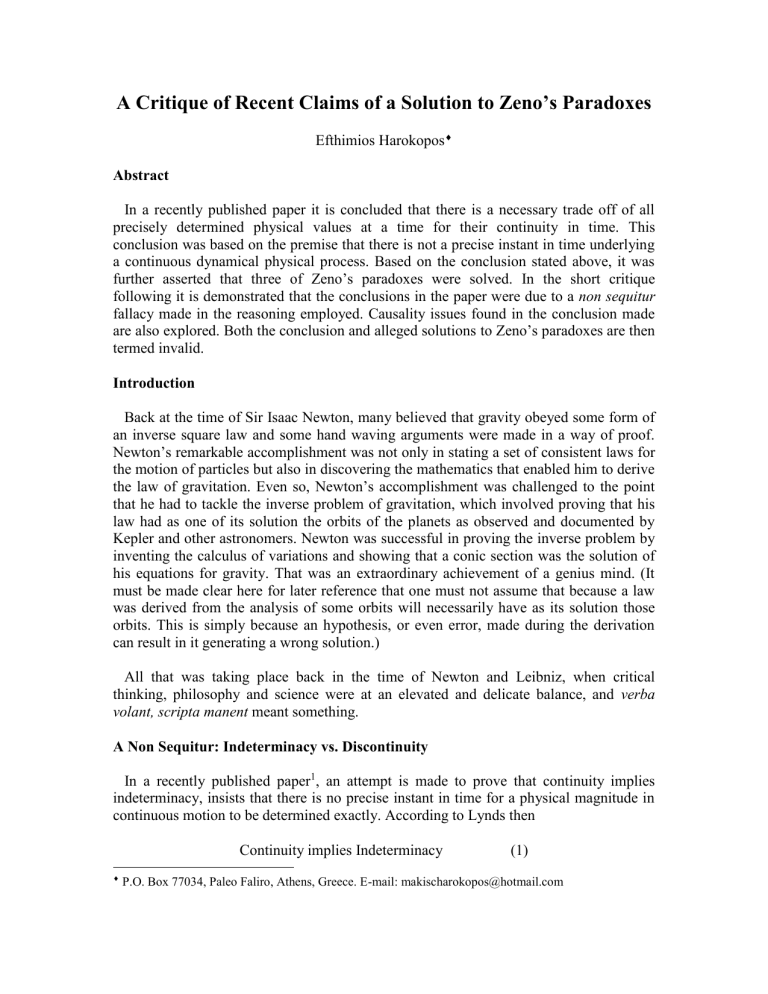
A Critique of Recent Claims of a Solution to Zeno’s Paradoxes
Efthimios Harokopos
Abstract
In a recently published paper it is concluded that there is a necessary trade off of all precisely determined physical values at a time for their continuity in time. This conclusion was based on the premise that there is not a precise instant in time underlying a continuous dynamical physical process. Based on the conclusion stated above, it was further asserted that three of Zeno’s paradoxes were solved. In the short critique following it is demonstrated that the conclusions in the paper were due to a non sequitur fallacy made in the reasoning employed. Causality issues found in the conclusion made are also explored. Both the conclusion and alleged solutions to Zeno’s paradoxes are then termed invalid.
Introduction
Back at the time of Sir Isaac Newton, many believed that gravity obeyed some form of an inverse square law and some hand waving arguments were made in a way of proof.
Newton’s remarkable accomplishment was not only in stating a set of consistent laws for the motion of particles but also in discovering the mathematics that enabled him to derive the law of gravitation. Even so, Newton’s accomplishment was challenged to the point that he had to tackle the inverse problem of gravitation, which involved proving that his law had as one of its solution the orbits of the planets as observed and documented by
Kepler and other astronomers. Newton was successful in proving the inverse problem by inventing the calculus of variations and showing that a conic section was the solution of his equations for gravity. That was an extraordinary achievement of a genius mind. (It must be made clear here for later reference that one must not assume that because a law was derived from the analysis of some orbits will necessarily have as its solution those orbits. This is simply because an hypothesis, or even error, made during the derivation can result in it generating a wrong solution.)
All that was taking place back in the time of Newton and Leibniz, when critical thinking, philosophy and science were at an elevated and delicate balance, and verba volant, scripta manent meant something.
A Non Sequitur: Indeterminacy vs. Discontinuity
In a recently published paper 1 , an attempt is made to prove that continuity implies indeterminacy, insists that there is no precise instant in time for a physical magnitude in continuous motion to be determined exactly. According to Lynds then
Continuity implies Indeterminacy (1)
P.O. Box 77034, Paleo Faliro, Athens, Greece. E-mail: makischarokopos@hotmail.com
Even if one accepts the argument made by Lynds using the concept of precise instants in time to assert the truth of conditional 1, this is something that has been known for a long time now. The concept has been debated since the time of ancient philosophers, later by
Newton, Leibniz and Berkeley and in modern times placed into a rigid mathematical framework by great minds such as Cantor and Robinson with the Continuum Hypothesis and Non-Standard Analysis, respectively
2
. But let us assume that the argument made by
Lynds is acceptable and (1) is true.
Lynds then asserts that because of indeterminacy there is a trade-off of all precise physical values at any instant of time for their continuity in time. This can be described in short as:
Indeterminacy implies Continuity (2)
This new conditional, (2), is the inverse problem to be demonstrated, as in Newton’s case discussed above. That is, given that continuity is deduced from the phenomena, one must prove that such continuity is the effect of indeterminacy. The conditional (2) cannot be simply deduced from conditional (1). It is known that if A implies B is true, then the conditional B implies A is not necessarily true, except in the case that A is a necessary and sufficient condition for B, that is A and B have an equivalence relationship.
Deducing (2) from (1) alone is a non sequitur unless one can show that the cause of continuity is indeterminacy, in addition to showing that the cause of indeterminacy is continuity. Thus, an equivalence relation must be demonstrated. However, Lynds seems to assume that because he has demonstrated that if continuity is present then indeterminacy results, it follows that if it is assumed indeterminacy is present, then that implies continuity must also be present. However, the second part, the inverse problem, is the hard part to prove and it is not even touched in the paper.
The intricacies of a method used to demonstrate indeterminacy may be the reason why it may not imply continuity. The proof of the existence of indeterminacy was based on the assumption that there is not a precise instant in time for physical values to be determined. But what about if there really is one and we just cannot prove it? In that case, the implication (1) is wrong and nothing can be said about (2). Furthermore, even if there is a precise instant in time, indeterminacy can still be present for other reasons not explored in the arguments. This is why a proof of the inverse problem is necessary for a complete demonstration of the argument.
Stretched Causality
Lynds, using arguments employing the concept of a precise instant in time, has only demonstrated the truth of conditional (1). He does not demonstrate the truth of conditional (2) because he does not establish how indeterminacy facilitates continuity but resorts in some type of circular argumentation involving Zeno’s paradoxes and a trade off. Furthermore, the proposition:
Indeterminacy
Continuity (3) is an equivalence relation arising form (1) and (2), and besides being a bold statement it establishes a form of a physical law with stretched causality. Specifically, if motion is continuous, it causes indeterminacy, and concurrently, the effect of indeterminacy is continuity via some undefined process, termed a trade off of physical values by Lynds.
The concurrent nature of cause and effect suggests that one of the two notions must have a mathematical use only, if one must avoid a causality violation. One should always be very critical when a physical law involves stretched causality. In the case of Newton’s second law, the famous equation F = m a , the skepticism was overlooked in the face of the predictive power and consistency of his system of laws. In the case of (3), one can hardly think of any predictive capacity useful in a better understanding of motion.
Zeno rests in peace
As relating to Zeno’s paradoxes, Lynds seems to have a different comprehension of the arrow paradox than most. The arrow paradox is about the assertion of Zeno that the phenomenology of motion implies an illusion. Specifically, Zeno claimed that an arrow in motion cannot be distinguished from an arrow at rest or at another place in its path and therefore, if there is nothing deduced directly from the phenomena about the motion of an arrow, motion is an illusion. Zeno was not particularly concerned whether precise instants in time can be defined or whether something was traded-off for the arrow to be in motion.
His paradox described a concern about the concept of motion at a higher level than that encountered in the dichotomy paradox. In the dichotomy paradox Zeno claimed that motion is impossible and not only that a goal will never be reached as Lynds and others misinterpret. Under some interpretations of the dichotomy paradox, motion cannot even commence. In the arrow paradox, in addition to the impossibility of motion, Zeno claims that motion is an illusion. Of course, the arrow paradox was later used to attack discrete atomism and to claim that if there is a void between adjacent atoms, motion cannot take place simply because there is no medium for it. However, Zeno seems to have considered that a trivial conclusion, as discrete atomism was an easy target and he concentrated on attacking pluralism.
A solution to Zeno’s paradoxes is not possible just by proving (1), since for the most part those paradoxes deal with continuity issues, which Lynds assumes to exist in the first place. By introducing indeterminacy, a claim for a solution to Zeno’s paradoxes is a clear non sequitur .
Zeno’s paradoxes are not about the existence of precise instants in time and precise physical values, or some type of a trade off, but about the impossibility and illusion of motion in general. Nevertheless, despite the errors in the paper by Lynds, the positive side effect is a revived interest in an ancient paradox that is still unanswered. Current physics cannot answer Zeno’s paradoxes and a bolder step is required than the one attempted by Lynds in order to obtain a solution. Zeno’s paradoxes are not logical puzzles and a solution to them has not been offered by modern physics. The paradoxes challenge the naive Pythagorean perceptions of space-time and a complete solution
would require a revision of physics and cosmology, not just analysis based on simple mechanics concepts, which result in the paradoxes being valid in the first place.
Conclusion
Lynds commits a non sequitur but this is not to say that (2) is necessarily false. It just says that Lynds has failed to prove it in a scientifically accepted way, either deductively or inductively. If (3) is true in a macroscopic world, the foundations of Newtonian mechanics are shaken and so are those of General Relativity. The alternative is then an extension of Quantum Mechanics principles in the macroscopic world and a total revision of classical mechanics. As such, although wrong in his analysis and argumentation,
Lynds may have provided the stimulation for investigating the viability of such a revision, something lacking at the moment empirical support but being a very popular speculation in science fiction and metaphysics. However, there is not anything new in such thinking or approach. It does not provide any definite breakthrough, in terms of a quantitative law, to serve as a basis for any extension or challenge to classical mechanics applications in a macroscopic world. Therefore, nothing new was said in the paper by
Lynds, whilst what was concluded was the result of a fallacious argumentation.
References
1 Lynds, P. Time and Classical and Quantum Mechanics: Indeterminacy vs. Discontinuity. Foundations of
Physics Letters , 16 (4), (2003)
2 Davis, Philip J., Hersh, Reuben, The Mathematical Experience , Houghton Mifflin Company, Boston,
(1981)
